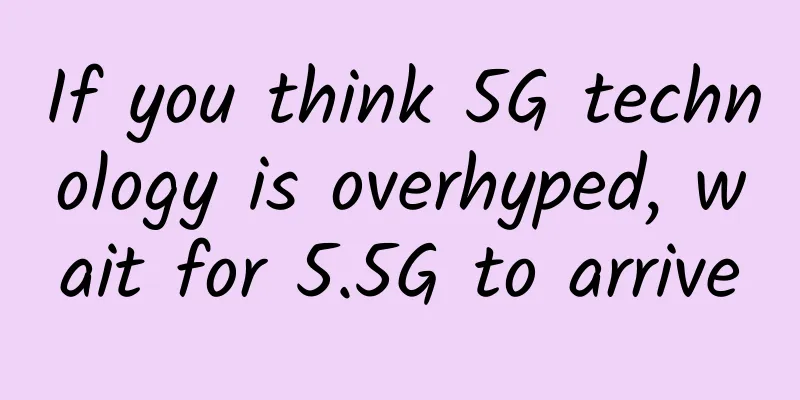The Internet of Things in the Eyes of Operators: The Story of the Internet of Things and Two Scissors

|
Previous article: "The Internet of Things in the Eyes of Operators: From 0 to 300,000, and then to the stars and the sea" Recently, two stories of scissors gap happened around me: one is the statistical bulletin of the communications industry from January to April released by the Ministry of Industry and Information Technology. The total volume of telecommunications business increased by 125% year-on-year, but the revenue increased by only 4.5% year-on-year. These data are affected by "mobile business + broadband business", a huge scissors gap. I can't help but sigh: Has the traditional business reached the top? The second is that the company announced the annual mobile business net increase task, which is the same as the net increase task of the Internet of Things this year. One is such a huge mobile business market, and the other is an emerging business that has just started, but the task volume is the same. It is another scissors gap, and another sigh - how will the traditional business change? What will happen in the future of the Internet of Things?
This is the best era, this is the worst era - if you adapt, you will be the best, with endless social development dividends waiting to be tapped; if you don't adapt, it will be the worst, and you won't be reminded when you are abandoned. As a member of the operator's Internet of Things, how should you adapt to such changes? The IoT system is one of the most integrated product systems among operators. From the CRM acceptance system to the PAAS connection management platform or SAAS application enablement, from the card blank selection and procurement to the supply docking, from the business docking model to the acceptance process, all are completed independently within the system. In this context, are we a control department or a business department? Are we a support team or a front-line team? Or both? These are constantly thought about and explored during the development process. My friends and I have drawn up a "three-year small plan". From 2017 to 2019, we are an "entrepreneurial support team". In addition to being responsible for revenue and market size, we need to be more responsible for the development of the local industry. The ability to promote projects, the grasp of industry information, and the smoothness of internal coordination are the three fundamentals to ensure the long-term and effective development of the business. 1. Transformation of responsibilities Traditional frontline operators are generally divided into three categories, and IoT people need to transform from traditional account managers who focus on tasks, traditional industry managers/sales department heads who focus on management, and traditional product managers who focus on processes to IoT project managers. The "IoT project managers" here have four requirements: understanding of industry information, driving force for the company's internal processes, good ICT IoT business capabilities, and positive energy. Once the understanding changes, the work will naturally become smoother. 2. Product Sublimation The prospects for the Internet of Things are bright, and there is no future in simply selling Internet of Things cards - the Internet of Things needs to provide a series of solutions such as fire protection, Internet of Vehicles, cloud-pipe-end packaging, industrial routing + pipelines, etc. that adapt to market policies and products and are packaged to meet market demand. Yes, all Internet of Things must evolve and develop in the form of ICT projects in order to be competitive in the market. 3. Problems and Solutions
We are not afraid of problems, but we are afraid of not having a direction to deal with them. The author sorts out the most concentrated problems at present and provides ideas for solutions. 1. The cycle is too long Unlike traditional businesses, many IoT businesses take as short as two months to bear fruit, and some take as long as a year to follow up. The long time period leads to untimely incentives and a slow expansion cycle (see my article “From 0 to 300,000, and then gazing at the stars and the sea - the mental journey of operators' IoT personnel (Part 2)”). Solution: If the cycle is long, then expand the scope of cooperation and carry out cooperation in more scenarios and more projects. Use the wide scope of cooperation to make up for the problem of long cycle and ensure the continuous and strong development of business. 2. Complex affairs I once discussed the situation of adding more staff, but after communicating with the supervisor, I temporarily gave up the idea because he asked, "Are you confident in handing over such matters to temporary staff?" Because the business acceptance link is relatively core and requires a large number of communication objects, the solution is to ask yourself two questions: Is the status of the team members in good condition? Is there a smarter way to work? 3. Conflict with the basic business The current mobile data traffic market has reached the most relaxed policy period in history. The unlimited data traffic policies of the three operators are getting lower and lower. The severe competition pressure forces the channels to explore new channels and open up new market space. Unfortunately, some IoT scenarios are suitable for such mobile phone policies, and the result is the beginning of various vicious competition cycles. The IoT prices that have finally stabilized have been impacted by the operator system. Solution: Be willing to give up, if you can't do it, don't do it. One or two units can't shake the foundation. The Internet of Things should look at the long term and focus on services and win-win cooperation models. |
<<: The hidden threat of smart home privacy leakage comes from the router
>>: Mobile phone roaming has finally become history, what about IoT roaming?
Recommend
Comparing WiFi 6 and WiFi 5, there are three differences
[[430598]] The shopping festival is here. If you ...
HostingViet: Vietnam VPS monthly payment 30% off, 28 yuan/month-1GB/20G SSD/unlimited traffic
HostingViet has updated the validity period of th...
Single-pair Ethernet standard means goodbye to batteries
If you’ve ever spent a Christmas morning with chi...
It may be too early to claim that 5G package user development has cooled down
[[384501]] The three major operators all released...
Why are 5G chips so expensive?
Recently, MediaTek officially announced that it w...
5 things you should know about monitoring tools
Does your IT team have too much data and not enou...
A Preliminary Study on Software Defined Network (SDN)
【51CTO.com Quick Translation】Before 2008, the ent...
UDT, a high-speed data transmission protocol based on UDP
Introduction Simple is beautiful. In the world of...
What is the transport layer protocol?
Transport layer protocols are an important part o...
DesiVPS launches NVMe hard drive series Los Angeles VPS starting from $20 per year
DesiVPS sent a new email saying that it has launc...
5G drives growth in rising private mobile network market
The use of dedicated mobile networks based on LTE...
kernel panic-not syncing:VFS:Unable to mount root fs on unknown-block
According to the feedback from the merchant, a us...
Banwagong: Los Angeles CN2 annual payment starts from $46.5, 1-10Gbps US CN2 GIA/Hong Kong CN2 GIA/Japan CN2 GIA
Bandwagonhost VPS was founded in 2012 and is affi...
Can lightweighting become the spark that sets 5G off?
At the 31st PT Expo held recently, 5G became the ...
Replacing with a new one doesn’t work? Learn how to adjust the wireless router signal
Whether it is Tieba, Weibo or the discussion area...









